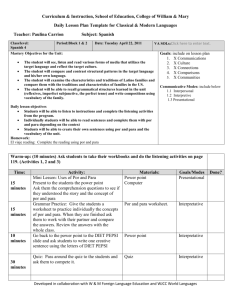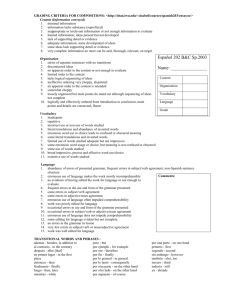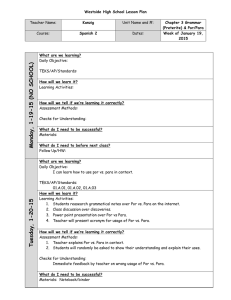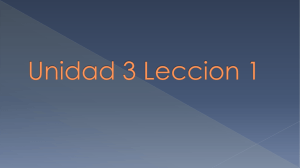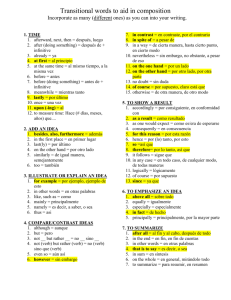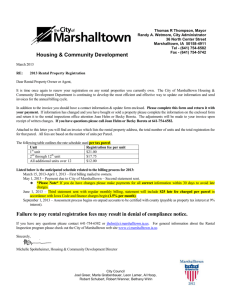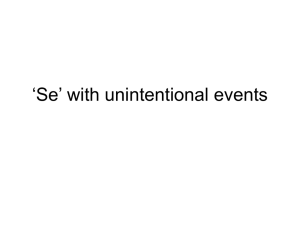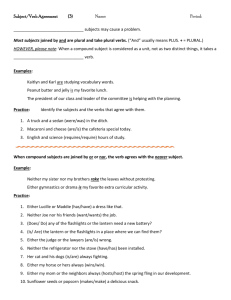COMMANDS and POR-PARA
advertisement
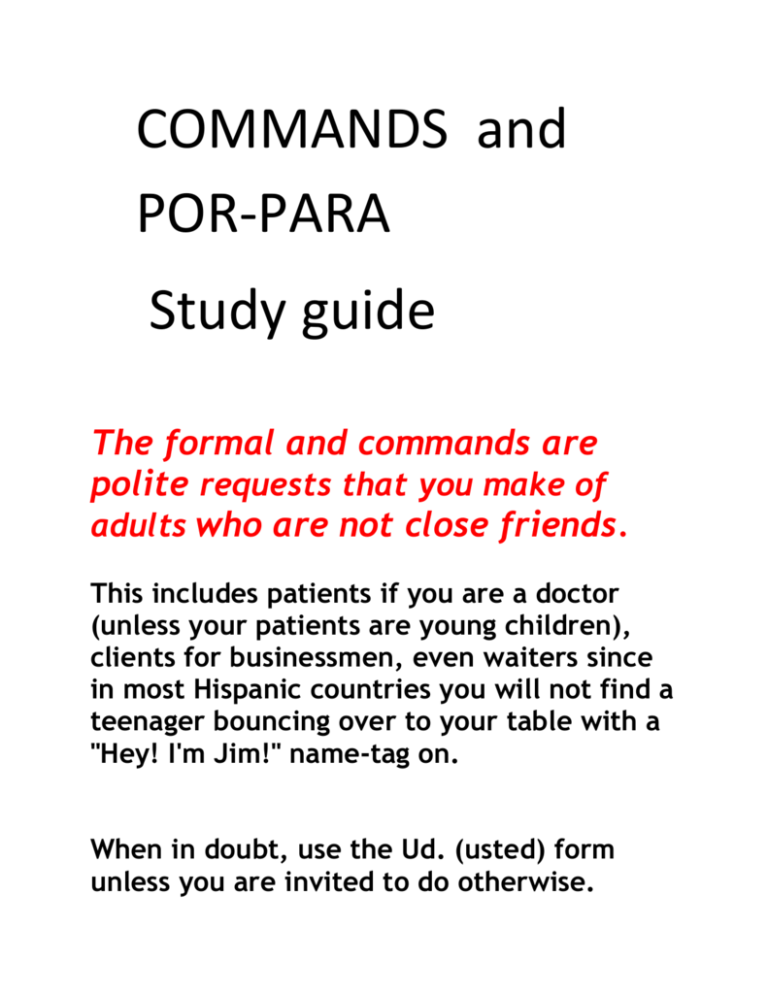
COMMANDS and POR-PARA Study guide The formal and commands are polite requests that you make of adults who are not close friends. This includes patients if you are a doctor (unless your patients are young children), clients for businessmen, even waiters since in most Hispanic countries you will not find a teenager bouncing over to your table with a "Hey! I'm Jim!" name-tag on. When in doubt, use the Ud. (usted) form unless you are invited to do otherwise. The Plural form represents commands or requests of more than one person. Like "ustedes" itself, the plural command form is neither formal nor informal in Latin America. Let's make a Formal Command. We'll use the verb Hablar. 1. We always start with the first person singular "Yo" form of the verb: hablo 2. Now drop the "o" : habl- 3. Now we attach the "opposite" vowel ending to our verb stem to form our command: 4. ¡ Hable ! o o We use the "e" -the vowel we normally use with -Ir and -Er verbs for the -Ar verbs . And we use "a" with the -Ir and -Er verbs! o If the "Yo" form is irregular, the command will be irregular: 1. For example, Traer 2. the present tense "Yo" form is Traig 3. We drop the "o" : Traig- 4. We add the opposite ending: `a' [Traer is an -ER verb, so the opposite ending is the -AR ending.] 5. And we have our command: Traiga ("Bring!") The Usted and Ustedes command forms are the Ud. and Uds. form of the Present Subjunctive. Here are the endings for the formal commands: Usted (Formal AR VERBS IR/ER VERBS e a form) Ustedes en an (Plural form) If the Yo form is irregular in the Present Tense, it will be irregular in the Formal & Plural command form. Ud. Infinitive Yo form Command Form Salir Salgo Salga Hacer Hago Haga Poner Pongo Ponga Decir Digo Diga Venir Vengo Venga With verbs that end in "Y" in the Yo form as well as Saber are very irregular: Ud. Infinitive Yo form Command Form Estar Estoy Esté Dar Doy Dé Ser Soy Sea Ir Voy Vaya Saber Sé Sepa If there is a stem change in the Present Tense, there will be a stem change in the Command (Present Subjunctive) form: Ud. Infinitive Yo form Command Form Pedir Pido Pida Pensar Pienso Piense Dormir Duermo Duerma Atender Atiendo Atienda Hervir Hiervo Hierva Entender Entiendo Entienda Poder Puedo Pueda Freír Frío Fría uses of por AND para POR or para Uses for por: 1. Expressing movement along, through, around, by or about: Anduve por las calles de la ciudad. I walked through the streets of the city. Denoting a time or duration when something occurs. Viajamos por tres semanas. We're traveling for three weeks. Expressing the cause (not the purpose) of an action: Me caí por la nieve. I fell down because of the snow. Meaning per: Dos por ciento. Two percent. Meaning supporting or in favor of: Trabajamos por derechos humanos. We work for human rights. Introducing the agent of an action after a passive verb: Fue escrito por Bob Woodward. It was written by Bob Woodward. Indicating means of transportation: Viajaré por avión. I will travel by plane. Used in numerous expressions: Por ejemplo. For example. Por favor. Please. Uses for para: for the purpose of or in order to: Para bailar la bamba, necesita una Meaning poca de gracia. In order to dance the bamba you need a little grace. With a noun or pronoun as object, meaning for the benefit of or directed to: Es para usted. It's for you. Meaning to or in the direction of when referring to a specific place: Voy para Europa. I'm heading to Europe. Meaning by or for when referring to a specific time: Necesito el regalo para mañana. I need the gift for tomorrow. Vamos a la casa de mi madre para el fin de semana. We're going to my mother's for the weekend. UsES OF por AND para 2. Realidades 2 A PRIMERA VISTA

